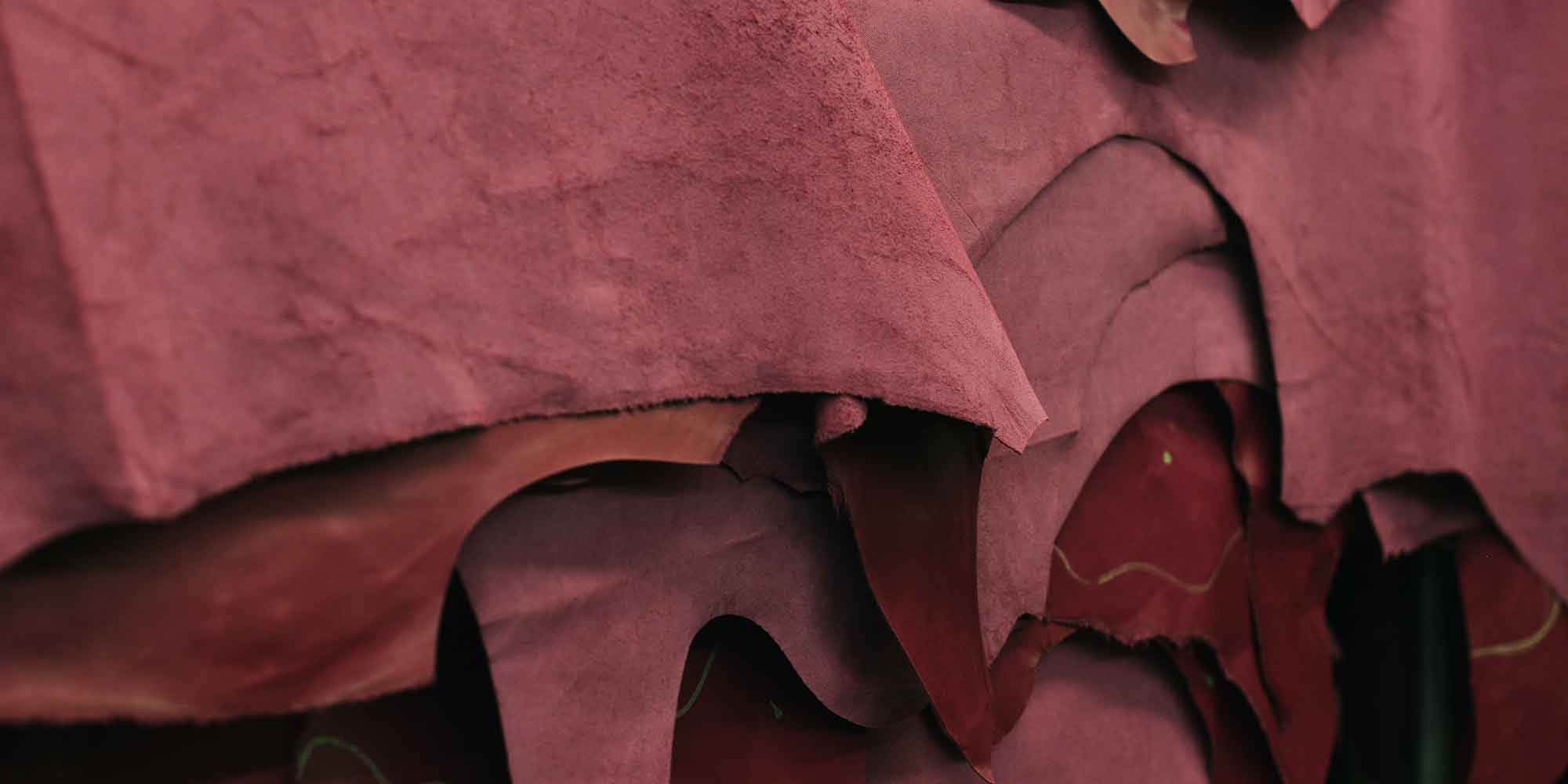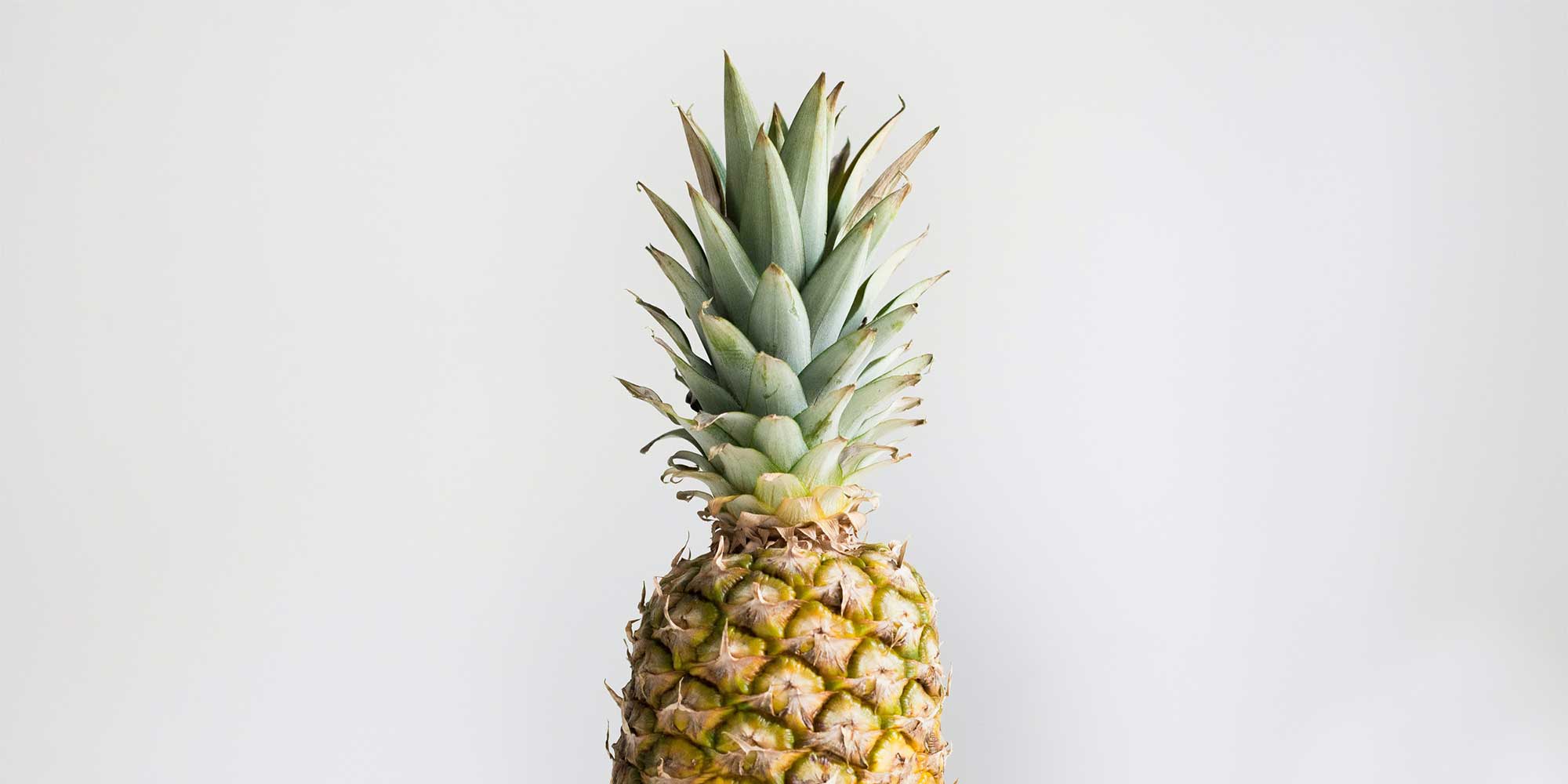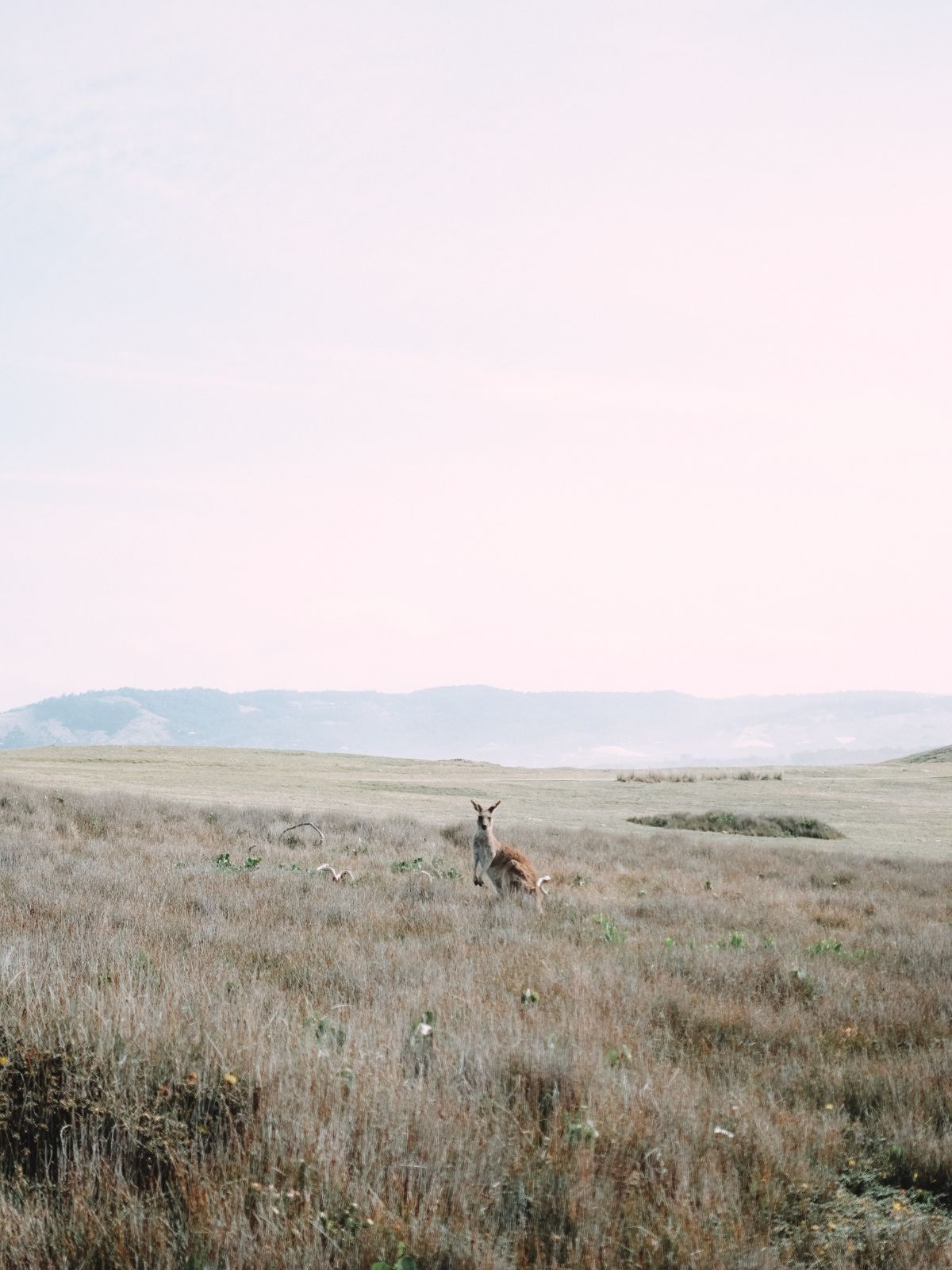With people considering where their clothes come from more than ever before, leather is a contentious topic in the sustainable fashion sphere. So is leather ethical or sustainable? Let’s take a closer look.
Leather may not be as eco-friendly as claimed
Leather boots, bags, wallets and jackets are considered essential staples in many wardrobes. With promises of being a long-lasting, “natural”, and even “biodegradable” material, it can be easy to believe there’s a way to source animal-derived leather that’s not harmful to the planet and, in fact, even part of a sustainable system. But is this accurate? Let’s explore the many hidden costs of leather and why consumers concerned about animal welfare and sustainability are best to avoid it.
How does leather impact the environment?
The environmental impacts of leather production extend across the lengthy and sometimes complex supply chain. Lots of people think leather is sustainable because it’s simply a by-product of the meat and dairy industries—in other words, that leather reduces waste. However, it’s not true that leather is a mere by-product. As a consequence, the environmental impact of cattle rearing should be “economically allocated” across the different sectors and products that profit from this system. So, what’s the impact of cattle ranching?
Deforestation
Deforestation is a serious problem across the fashion industry, caused by a reliance on unsustainable cellulose materials made from logged, often old-growth trees, and other land-inefficient material production. Too, among the most alarming harms caused by leather production is deforestation. As much as 80% of deforestation in the Amazon Rainforest is tied to cattle ranching. This deforestation results in massive biodiversity destruction and, in turn, the endangerment of native animal and plant species. And it’s not just deforestation—all land and vegetation clearing is harmful to the planet, which is why land efficient agriculture is so important.
Another primary driver of deforestation is soy production, which is closely linked to leather, as well. Around 80% goes towards feed for cattle and other farmed animals. 77% of all agricultural land around the world is used to raise animals for slaughter and grow feed for them. The rearing of cattle is the leading driver of habitat destruction in Australia, with similar stories playing out across the globe.
You can see the visible impacts of deforestation in Brazil, one of the most significant bovine skin exporters worldwide (close behind India, the US and China). To put this back into a fashion context, 10,000 square metres of land in Brazil must be cleared or kept cleared to produce around nine leather jackets. It is likely this land was cleared illegally and that it is land in the biodiverse Amazon Rainforest. You need just over a metre of leather to make a jacket. By comparison, Piñatex’s pineapple leaf-based leather alternative needs just about 16 square metres of pineapple-growing land for each metre of material.
Greenhouse gas emissions
Let’s start with something you might have in your closet: a pair of cow skin leather boots. These seemingly innocuous shoes have an estimated climate footprint of 66kg of CO2e. Where does that CO2 come from?
Cattle are ruminant animals, which means that when they breathe, pass gas, and burp, they release methane—a greenhouse gas 84 times more potent than CO2 in the short term. The United Nations says, “livestock are one of the most significant contributors to today’s most serious environmental problems”.
Excluded from these calculations are further emissions, associated with land clearing. Land clearing for cattle rearing not only impacts biodiversity but also our warming climate. When we cut down and destroy trees, carbon is released into the atmosphere. This is one component of leather’s carbon impact.
Water, chemicals, and leather processing
Leather production is also water-intensive. Some estimates suggest that the creation of a cow skin tote bag might require more than 17,000 litres of water. Conventional cotton is often water-intensive, too, but studies find leather to be one of the most water-intensive materials that’s commonly used in fashion.
It’s not only that water is used up by leather production, but that it’s polluted, too. Skins are transformed into leather through the tanning process, and 90% of leather is tanned with carcinogenic chromium and often with formaldehyde and arsenic. These chemicals are detrimental to human health, reported to cause asthma, back pains, bronchitis, chronic dermatitis, DNA damage, and even cancer, to name a few. Today, the majority of tanneries have been moved to lower- and middle-income countries in an effort to export pollution problems. In these places, wastewater is often released into waterways untreated, impacting surrounding land and human and non-human animal communities.
What’s more, some evidence suggests that tanning processes—including vegetable tanning—can hinder the ability of animal skins to biodegrade. Considering biodegradability is hailed as one of animal leather’s main benefits over most non-animal alternatives, this is significant.
Vegetable-tanning is also far less innocent than it may first sound, requiring tannins found in the bark of trees, and with some reports finding “no significant differences” in the environmental footprint of leather tanned with tannins as compared to chromium.

How does leather impact people?
We know leather production causes harm to human communities nearby, like through toxic chemicals released into waterways. But are there more direct harms to people? The answer lies in the experiences of workers along the supply chain, from those rearing the cattle to those tanning the leather.
Tannery workers
Tannery workers are often exploited and face serious health risks, illness, and even death due to exposure to carcinogenic and harmful chemicals. For example, some reporting finds tannery workers have a 50% higher risk of pancreatic cancer linked to chemical exposure. Due to the pollution impact, industrial areas of China where leather is tanned are even referred to as “cancer villages” by local and international news outlets.
Farm workers
Forced labour can be a problem in leather supply chains, as with so many other fashion supply chains. Labour trafficking, debt bondage, and other forms of forced labour have all been recorded in Brazil, Paraguay, and Vietnam. This is of great concern given the lack of transparency in leather supply chains.
Many farm workers have also reported mental anguish related to their work, as they connect with the sentient animals they are paid to harm.
Slaughterhouse workers
We cannot forget that leather is produced in a slaughtering supply chain, and the human implications are significant. Slaughterhouse workers, like soldiers, commonly experience perpetration-induced stress (PITS), a mental illness similar to PTSD, but which comes from being “the direct reason for another being’s trauma”. According to the report by the Yale Global Health Review, as with PTSD, symptoms include “substance abuse, anxiety issues, depression, and dissociation from reality”.
Personal accounts from slaughterhouse workers killing cattle are disturbing and distressing, but the impact of slaughterhouse work doesn’t end there. Physical injuries are prevalent in this line of work, with around two injuries a week reported in the UK and two amputations a week in the US. But what’s perhaps even more concerning is what Yale researchers call “spillover in the psyches” of these workers who are often refugees, migrants, and other marginalised people, as many people with privilege avoid this work.
The mindset that slaughterhouse workers must maintain to survive their work can mean violence towards cattle transforms into violence against other people in their communities, too. Across 500 US counties, communities surrounding slaughterhouses fall victim to disproportionately high numbers of violent offences, including sexual assault.
How does leather impact animals?
While people on farms and in slaughterhouses report feeling traumatised by their treatment of animals, the animals themselves face intense trauma, only ending through slaughter.
Cattle and other animals tied up in leather supply chains like buffaloes, sheep, goats, pigs, and so many others are sentient and capable of fear and pain as much as joy and pleasure. Cows get excited when they learn something new, enjoy music, and form close social bonds. Sounds sweet, unlike the treatment of these creatures.
Some of the softest leather comes from calves, sometimes reared and killed specifically for luxury fashion. Other times, calf skin sales are a way to increase profits in the dairy industry, where male calves (who cannot produce milk) are slaughtered at five days old. Separating these young calves from their mothers—who are forcibly impregnated—can lead to depression in calves and extreme distress for their mothers, who are known to chase after vehicles taking their young away.
Cattle kept alive for longer often face painful yet legal mutilation like dehorning, branding, and castration without any pain relief.
Despite a potential lifespan of over 20 years, cattle whose skins are sold after their slaughter in the beef industry are generally a couple of years old. Cattle killed in leather supply chains are often slaughtered while fully conscious, in countries where animal welfare laws are either not enforced or non-existent. Even in countries with supposedly high animal welfare laws, cattle are regularly found to be slaughtered while conscious.
But what about certified sustainable and ethical leather?
Some certifications and standards claim to ensure sustainable and ethical leather. But is this possible? What are these standards changing, if anything?
The Leather Working Group (LWG) label is often seen on leather goods labelled as “sustainable” and “ethical”. On the plus side, LWG addresses environmental issues like the use of harmful chemicals such as chromium, effluent treatment, and also promotes traceability. But it’s not perfect: the Leather Working Group certification only covers tanneries, meaning many brands—such as Adidas, H&M, Zara, Prada, and Off White which use LWG certified leather—have been linked to Amazonian deforestation. Further, these tannery audits do not require social auditing to protect workers, and no consideration of cattle wellbeing is made, either.
What about leather made from animals raised in “regenerative agriculture” systems? Proponents claim that there is a sustainable and low-impact way to continue the widespread use of animal agriculture in a warming climate, saying that “high intensity, short duration grazing management can not only achieve greater livestock productivity and health but also sequester significantly more carbon than either continuous grazing management or the removal of animals from the land”. However, as the University of Oxford’s massive “Grazed and Confused” report finds, animal agricultural systems—even if they are more holistically managed—still have worsened environmental impacts than non-animal, plant-based systems do. The report concluded that data could not properly back up many of the aforementioned claims.
If you don’t mind wearing cow skin leather and want to continue wearing it, the most sustainable way is to keep wearing what you already have. You can also ensure that this leather lasts longer by caring for it properly. You can also look for vintage and pre-loved leather or recycled leather—but make sure that it’s reputably certified to be recycled and not greenwashed. It’s worth noting, too, that recycled leather can often contain plastic.
Sustainable leather alternatives

Are there any better alternatives to leather that aren’t simply plastic? While for now, synthetic leather remains the most common alternative to animal skin leather, that’s starting to change. And even plastic is getting a little more environmentally conscious, despite it still being plastic. PU, or polyurethane, is now more common than PVC (polyvinyl chloride), which is comparatively more harmful to the planet. Some synthetic leathers are now water-based or certified by standards like REACH and OEKO-TEX 100 which, while imperfect, are still a slight improvement on conventional synthetics.
PU synthetic leather has a reduced environmental impact during production when compared to cow skin leather, when considering climate, water, eutrophication, chemistry, and other impacts. This is worth keeping in mind if your options are limited (and you’ve already tried looking for pre-loved vegan leather— of which there is plenty). However, ideally, we should all be opting for more sustainable leather alternatives when buying new, especially as less synthetic options become more accessible.
Recycled, bio-based, and biodegradable leather alternatives
So, what are the options? First up, we have recycled leather (animal-based or synthetic), ideally certified by the Global Recycling Standard. Next, improving on purely synthetic leather are partly bio-based leather alternatives, like VEGEA, made from wine industry repurposed grape waste; Desserto, made from cacti; AppleSkin, made from—you guessed it—apple skins, cores, and seeds, and the earlier mentioned Piñatex, made from pineapple leaf fibre.
All of these materials are only partly bio-based and, like animal leather, won’t completely biodegrade. This is because they are coated in plastic, even if it’s a bio-based resin made from plant starch. While this is an improvement, it’s not the end of the road.
If you’re looking for a biodegradable leather alternative that’s available right now, opt for cotton-backed cork; washable paper, or more innovative and upcoming materials, like leaf-based Treekind—keeping in mind how new they are to the market and that comprehensive peer-reviewed studies on their environmental impacts might not yet exist.
The future of animal-free leather
In the future, we’ll also see much greater access to mycelium-based leather alternatives, like Mylo Unleather and Reishi. While these aren’t yet biodegradable, they’re far more climate, water, and land efficient and have some of the best tactile qualities.
There’s plenty to explore when it comes to the world of leather alternatives, and it’s an exciting time to see how this industry progresses. Material Innovation Initiative reporting has found that around 50 companies are currently working on next-gen leather-free materials. Almost all major brands are keen to use them, and there is plenty of financial support backing their development.
The future of leather-free fashion is looking good for people, the planet, and of course, our animal friends.



















